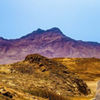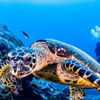
Take a trip to paradise: experience Mauritius



Nature, culture, and culinary delights
Mauritius, the ‘Star and Key of the Indian Ocean’, is a paradise in the South Sea that certainly lives up to its motto. The tropical island beckons with its white sandy beaches, colourful coral reefs, culinary temptations, and cultural diversity. Indian temples, small mosques, churches, and Chinese pagodas – they all bear witness to the diverse cultural influences. The church shows French, East Asian, and even Caribbean influences. Let us show you some inspiring experiences and places to go for a day out.


Sacred spaces, sacred water
The lavishly embellished temple complex of Surya Oudaya Sangam in the north of the island is where the island’s Hindu majority worship their ‘heavenly deities’, the ‘devas’. Please remember to dress respectfully or you may be denied entry. The carefully designed complex with its countless statuettes of lions and elephants offers insight into the Hindus’ lived faith. Further south, on the sacred Ganga Talao Lake, is the site of one of only few Hindu pilgrimage destinations outside of India. Here, hundreds of thousands celebrate the Mahashivaratri festival once a year and worship their god Shiva on the shore at the foot of a 30-metre high colossal statue.

A market by the sea
The island’s cultural diversity is just as evident in its rich culinary traditions and you can enjoy the greatest selection in the capital city of Port Louis. The hustle and bustle of the port city’s market is guaranteed to let nobody go hungry. If you’re good at bargaining, you can look forward to taking some still unknown spices, exotic vegetables, tropical fruits, fabrics, jewellery, and souvenirs back home at a reasonable price. All around you, restaurants and pubs invite you to step inside, while patisseries and snack stands draw you in to make some new culinary discoveries. Have fun and enjoy the flavours!


Seven Coloured Earths
One of the most beautiful hiking trails in Mauritius takes you through the Seven Coloured Earth Geopark in the tropical green southwest. Generously laid out avenues lined with palm trees lead visitors first to the 100-metre-high twin waterfalls of Charamel. Even better known than this attraction is the cooled lava flow that carved its way through the landscape many millennia ago. The wind and weather have since washed away all the water-soluble components, but what remain are red, violet, blue, yellow, brown, and green clay minerals – an incredible sight in the midst of lush deciduous forests. Had enough of hiking? Then maybe take a leaf out of the book of the 100-year-old giant tortoises that inhabit the park and enjoy a rest.


From field to bottle
Mauritius is famous for its ‘liquid gold’, aka rum. The Rhumerie de Chamarel lies between the Seven Coloured Earth Geopark in the west and the Black River National Park. The famous distillery welcomes its visitors in a truly paradisiacal garden, where hibiscus blossoms add bright accents of colour. Take a guided tour to experience first-hand how rum is made from sugar cane that the Rhumerie grows exclusively in Mauritius. The tasting is a special highlight, where you can sample the nine types of rum and liqueur that are made on site to your heart’s content. Follow it up by taking a break to enjoy a meal at their in-house restaurant.


History and dark sides
There is a sad history surrounding the mix of populations in Mauritius: the middle of the 19th century saw the island become the destination of a huge wave of migration. When it was no longer possible to enslave the native population, the British occupiers lured close to half a million contract workers from India to Port Louis as so-called indentured labourers. In the capital city, the former transit camp Aapravasi Ghat, a UNESCO World Heritage Site since 2006, is a reminder of this difficult legacy to this day. Mauritius has been independent since 1965. Nearly 70 per cent of Mauritians are the descendants of Indian immigrants.
Header - Photo by Balate Dorin on Adobe Stock
Paragraph 1 - Photo by 35007 on Getty Images
Paragraph 1 - Photo by Morris Mann on Shutterstock
Paragraph 2 - Photo by boivinnicolas on Adobe Stock
Paragraph 2 - Photo by Антон Яковлев on Adobe Stock
Paragraph 3 - Photo by luckymi on Adobe Stock
Paragraph 4 - Photo by razzel on Adobe Stock
Paragraph 4 - Photo by Roberto Moiola on Getty Images
Paragraph 5 - Photo by Konstantin Kulikov on Adobe Stock
Paragraph 5 - Photo by De Luca Davide on Shutterstock
Paragraph 6 - Photo by travelib history on Alamy
Paragraph 6 - Photo by Tarzan9280 on Getty Images











